While the traditional txakoli wine of Basque country is still an integral and important part of every day culture for the Basque the same can be said for cider. But this isn’t cider in the same sense as in the sweet, carbonized versiona on sale in Scandinavia. Neither does it resemble the heavy and expensive artisan ciders from England or France.
Basque cider is typically a beverage of around 5-6,5% in alcohol with no to low carbonization, good acidity and low to noticeable tannins. To some it more resembles a lambic than any other type of cider, and with its distinct character it has the ability to cut through many dishes that would otherwise be difficult to combine with food. One of the most famous towns for cider are Astigarraga, Hernani and Usúrbil (the later also known for its eel-fishing) but cider houses are spread all thoughout the region as well as the neighboring Asturia.
Our destination however, was none of these famous cider towns but a rural area outside of Tolosa which we (via a gps-induced detour and a good deal of “see you can’t get there from here” from the locals as well as a suicidal dog that had to be chased away from the car on foot) arrived at in the early evening.
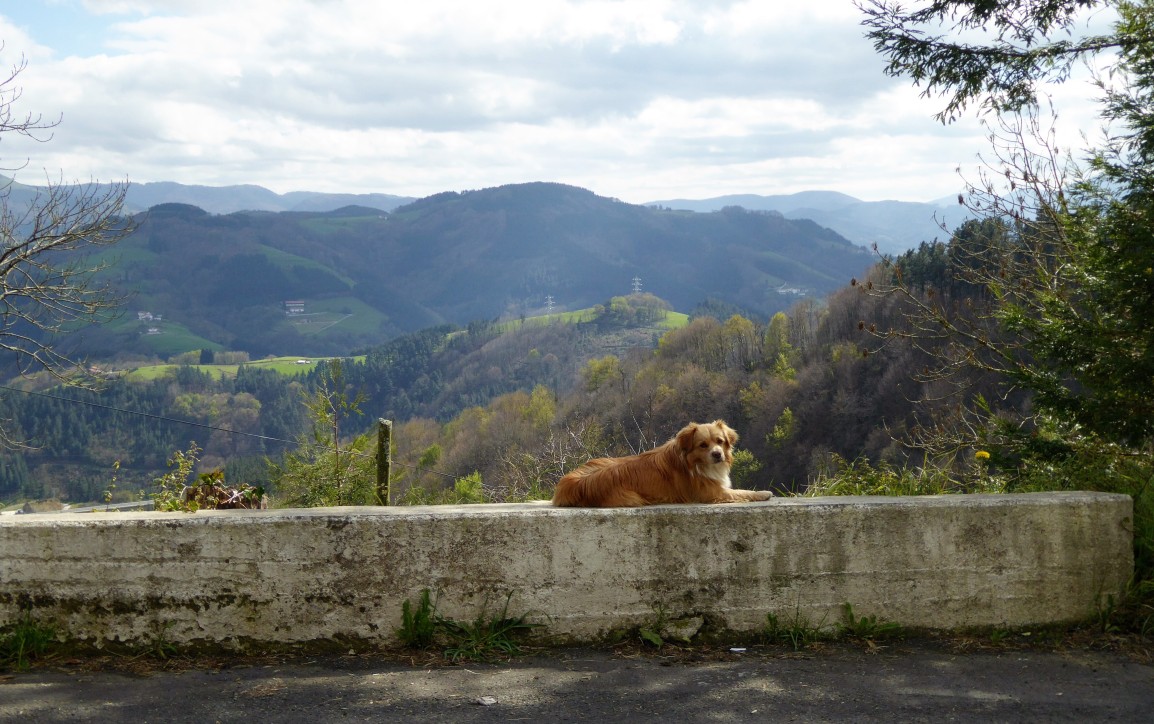
The goal of our trip was Isastegi Sagardotegia, one of the larger cider houses in Basque. Isastegi is a family-owned operation. Our guide for the evening – Aitor – is the grandson of the founder, who started Isastegi 31 years ago as a tiny cider house producing only a 1000 liters the first year. Grandpa is 91 years old now, but still keeps an eye on the family to ensure that general quality is upheld.
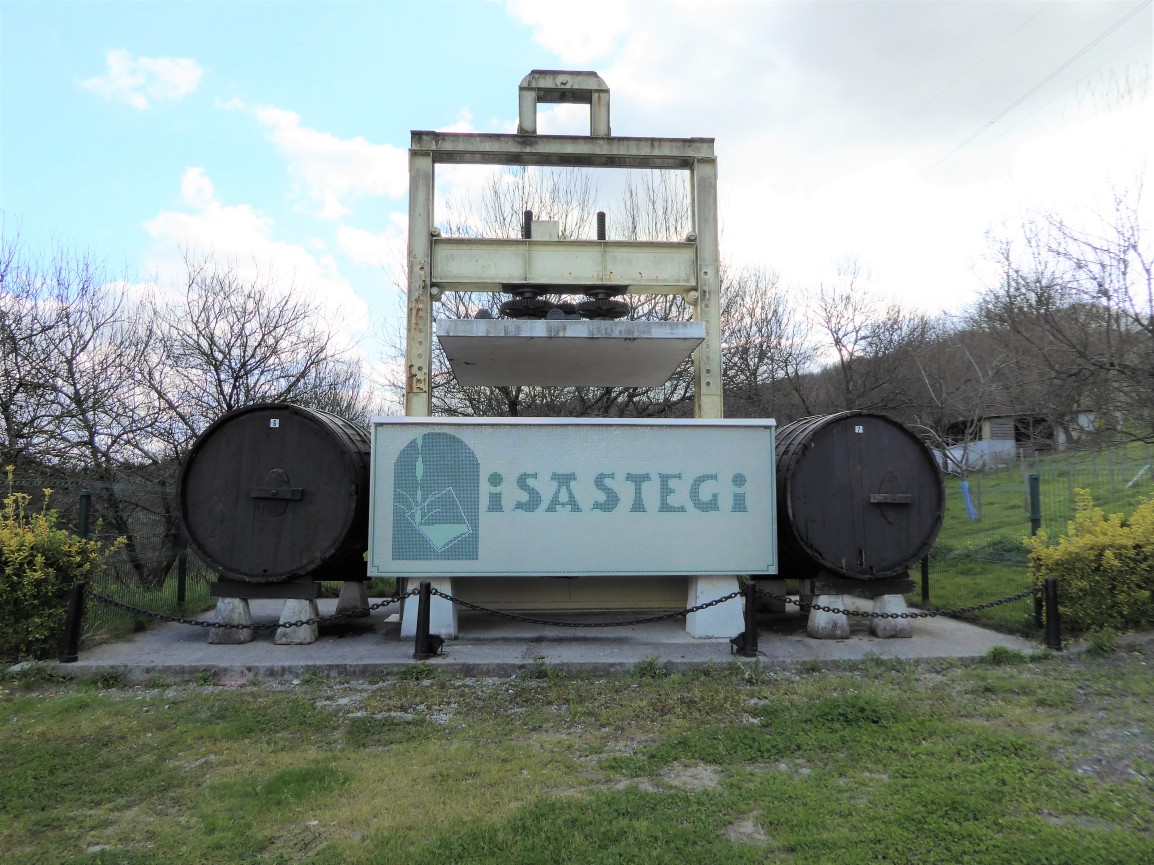
One of the biggest difficulties that cider producers both large and small are faced with in Basque is the shortage of apples. Over 70 distinct brands of cider are produced throughout the region which means an enormous amount of apples are harvested each year. But the Basque appetite for cider is larger still, and Isastegi is forced to buy apples from the entire north of Spain to meet demands despite having 100 hectares of orchards of their own.
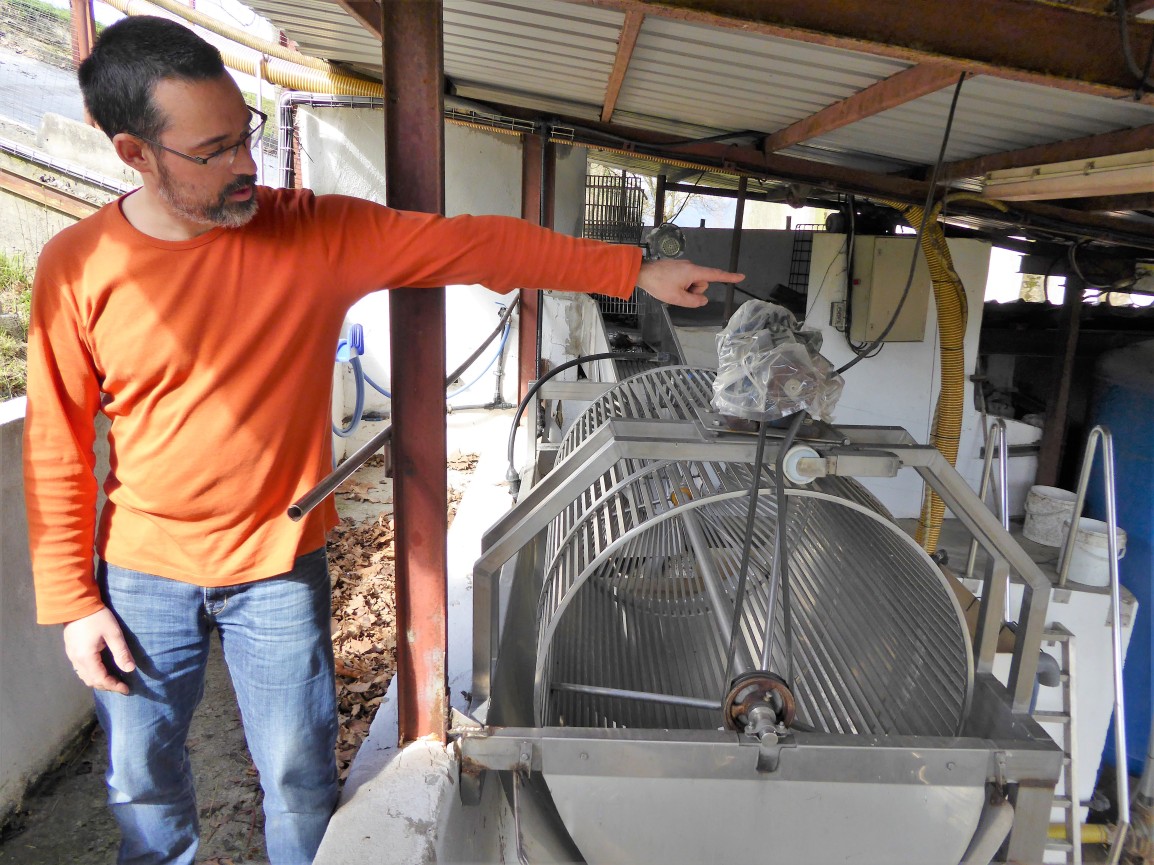
When the apples arrive at the cider house in the fall they are checked for quality and then chucked into a water-filled chute that both cleans them and transports them on to a machine that gently breaks the apples. It’s very important that they are broken and not cut, as cutting negatively affects the fibers. The apples are then pumped down to two pneumatic presses, and then onward to the fermenting tanks. The pulp was macerated with the must up until 5 years ago, when the practice was discontinued in order to produce a smoother, less tannic product. Everything is processed between 1-2 hours after arriving at the farm and they only do harvest 1 month/year.
During fermentation a strict temperature control of 18-20 degrees is introduced. Isastegi cider typically contains around 20 different types of apples. Of these at least 10 are sweet or dulce and some of the rest are outright bitter or amaro. All fermentation is made using natural yeast, which takes until January and allows a variation of yeast strains from the different apples to influence the fermentation process and add character to the cider. The tanks are blended before bottling, and the bottling is done throughout the year.
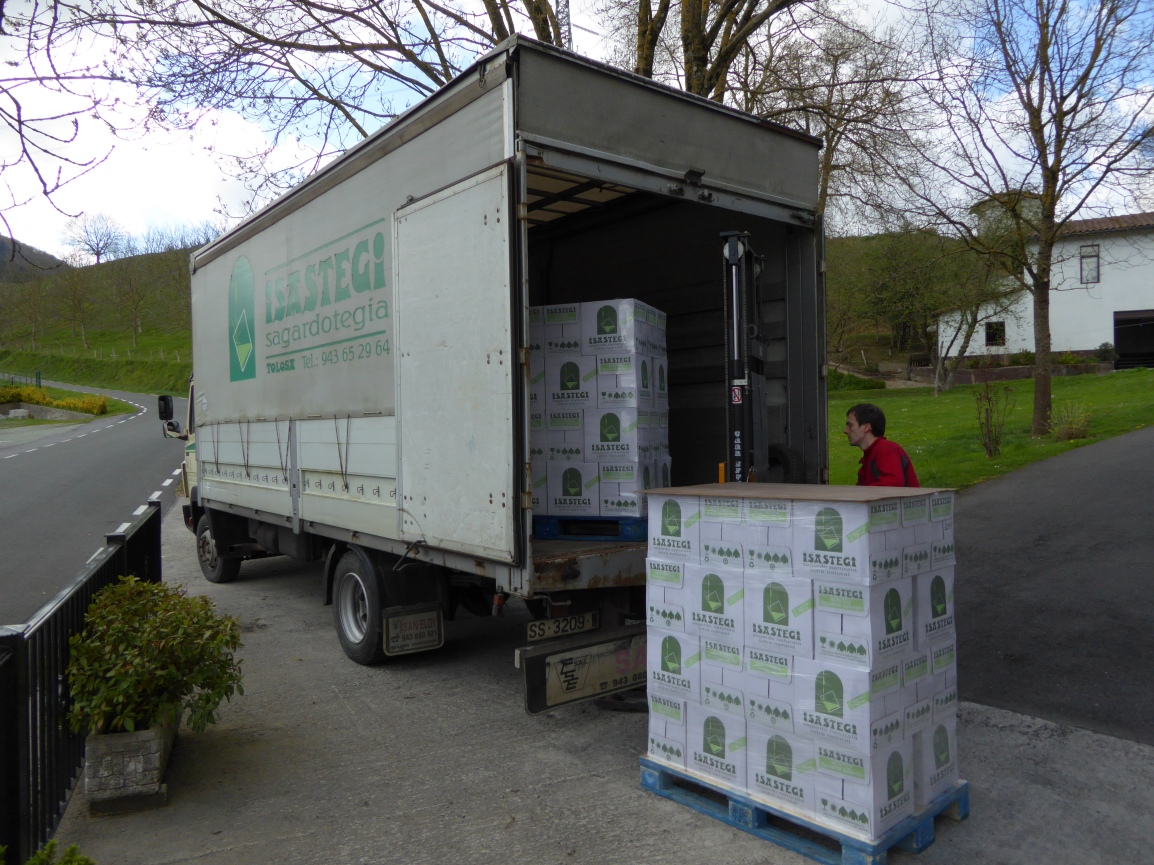
Even though they wish for and allow character in their cider Isastegi are very keen on consistency and quality control. For example; 1 tank takes about 3-4 days to bottle, meaning 3-4 different batches and lot numbers. Every single batch that Isastegi produces is sent to analysis during the bottling process in addition to analysis made in their own laboratory and checked for sulfur, methanol, ethanol and acidity amongst other things. Aitors uncle is an oenologist and is responsible for the testing, but professional tasters are also involved in the process. They taste through all the ciders produced – every single batch – and give them between 0-100 points. Isastegi together with 12 other producers form an organisation called Gorenak, and to be a member the average scores of the ciders must be kept consistently above 53. Today Isastegi has a capacity of over 1,5 million liters. One tank holds around 80 000 liters which means over 50 batches are tested extensively before bottling each year.
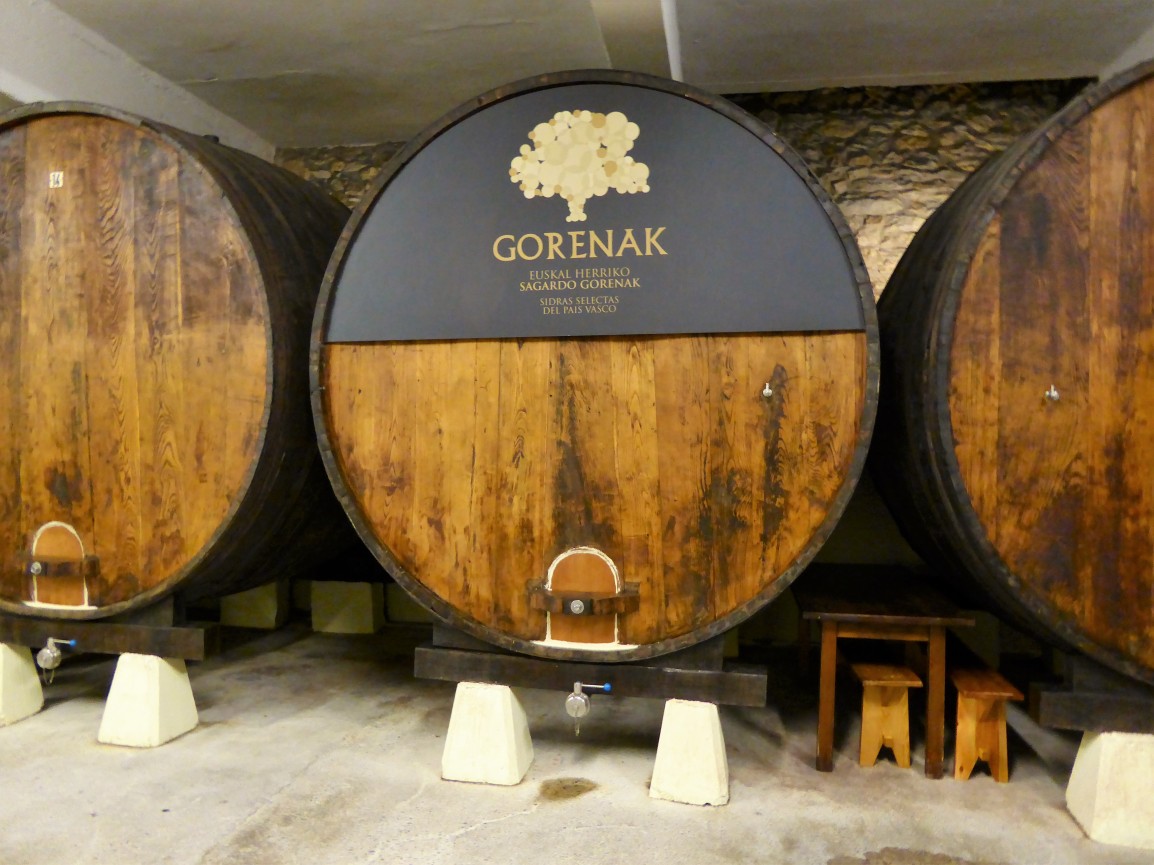
After showing us the winery we were led into an older part of the complex. Here large wooden casks line the wall, an austere interior accentuated bu the naked wooden tables and benches that make up the rest of the room. Every year between January and April this part of the cider house is turned into the stage for the traditional Txotx.
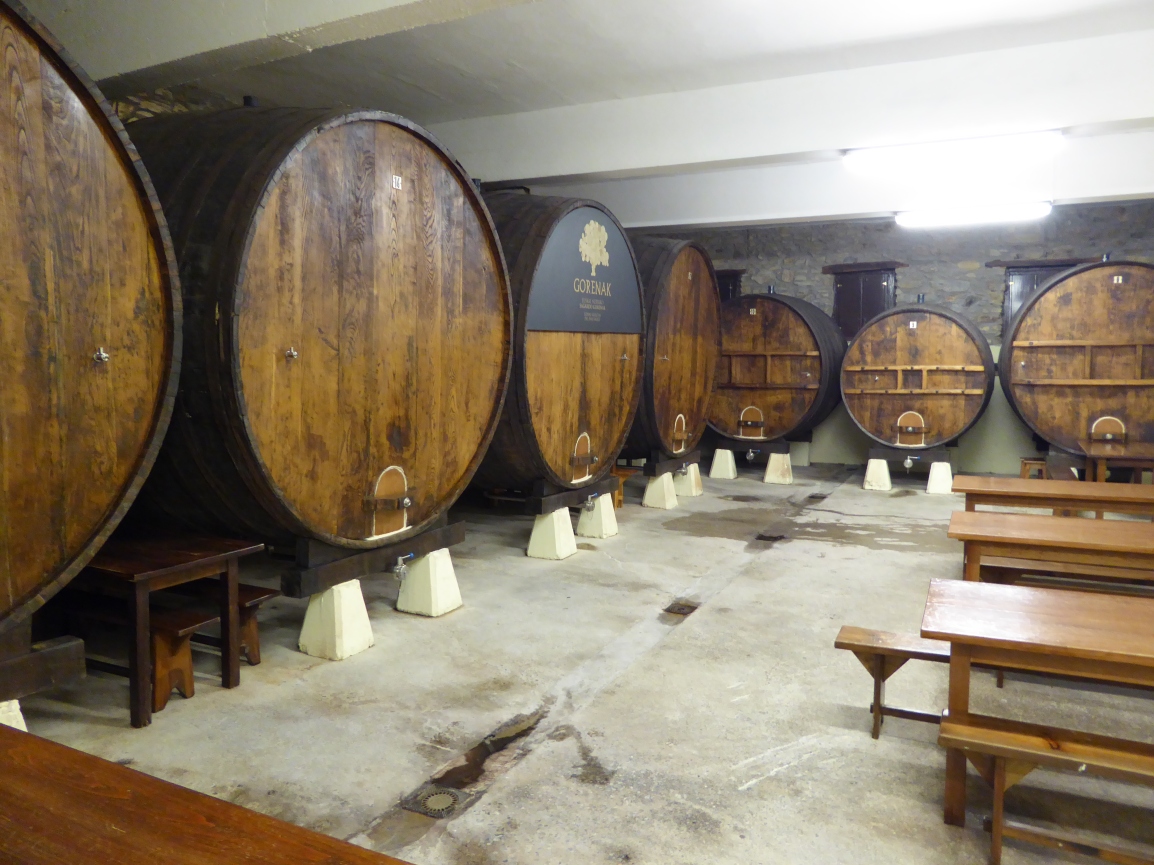
A txotx can mean many things. It is believed that the term originated from the sound that the cork made when it was pulled from a cider cask, but today it can signify either a toast, the call to partake in the traditional pouring of the cider or most commonly a traditional dinner held at one of the many cider houses in Basque. At a txotx guests are served a variation on a menu of chorizo cooked in cider, salt-cod omelet, fresh cod fried with peppers, char-grilled T-bone steaks, walnuts with quince compote and Idiazábal sheep’s cheese. Isastegi mostly has local guests, in fact they have their own bus service that runs between Tolosa and the cider house on evenings when the restaurant is open. Apart from the traditional menu guests are allowed to tap their own – unlimited amount – of cider from the wooden casks. Understandably the Txotx is very popular, and on Saturdays they sometimes have over 200 guests per evening.
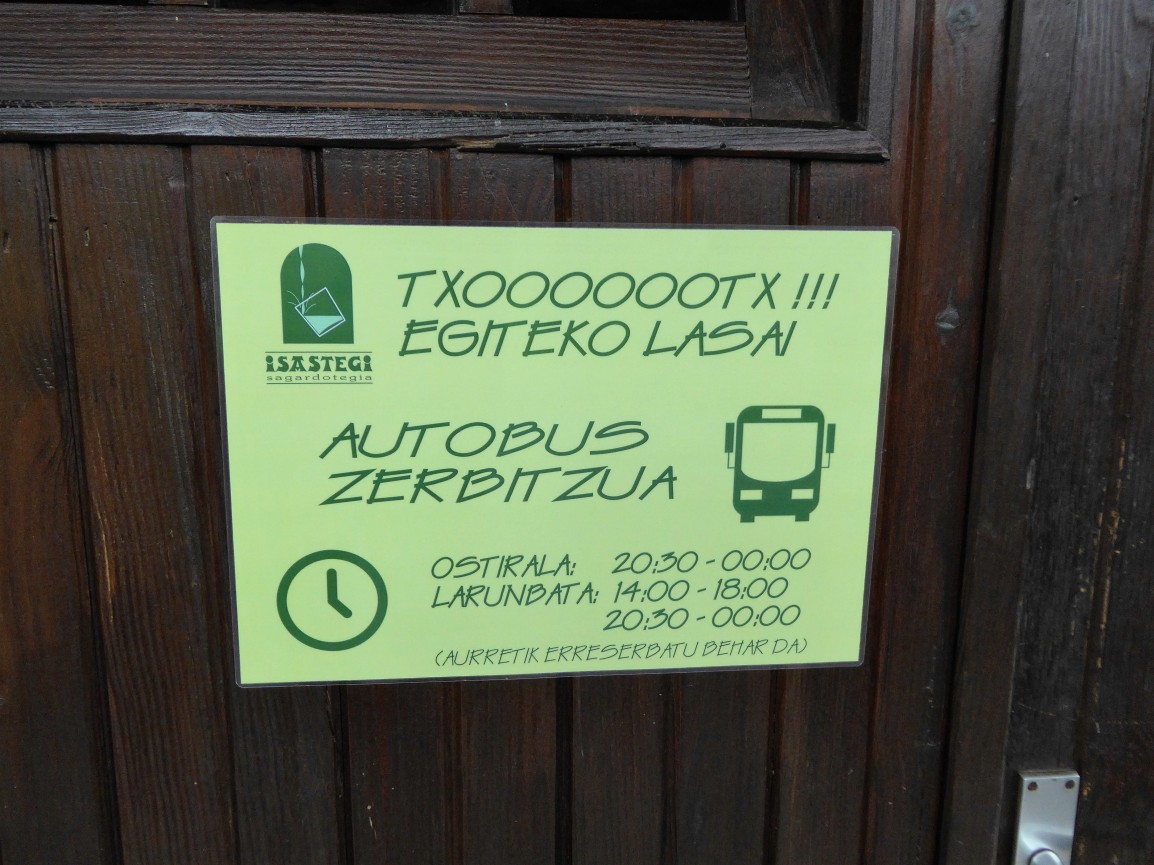
And so what of the cider?
Isastegi has an obliging effervescence and a strong oyster-like minerality coupled with good acidity and pronounced tannins. It follows up with aromas of pea shoots, green strawberries and white balsamic vinegar and a balanced dry finish with slight notes of hay. Ideal accompaniment to many of the traditional Basque dishes even if I wouldn’t go as far as to call it a perfect match with the heavy meat dishes that the locals drink it with. First and foremost it is a joy to drink, thirst-quenching yet interesting and guaranteed to make the evening pass in a more amiacable way whether you’re in the midst of a Txotx or at home with friends.
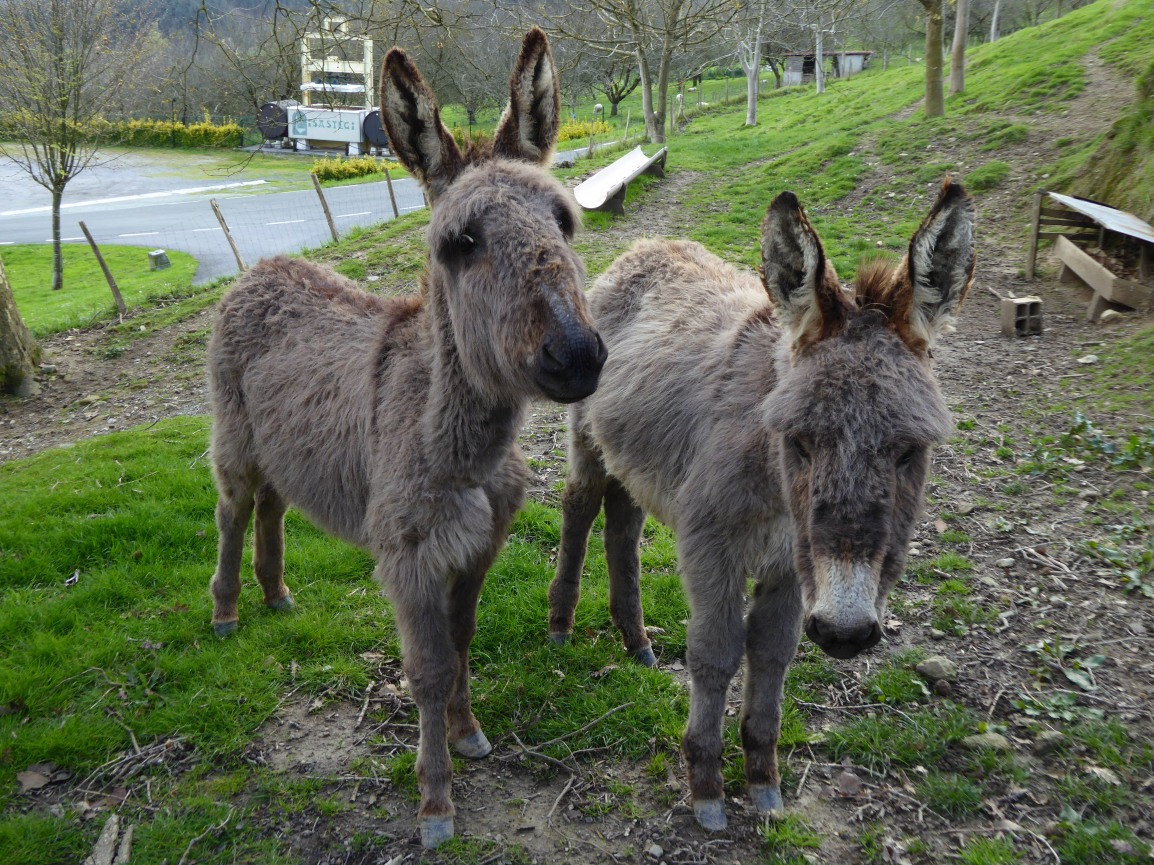

One thought on “Isastegi & The Cider Rule”